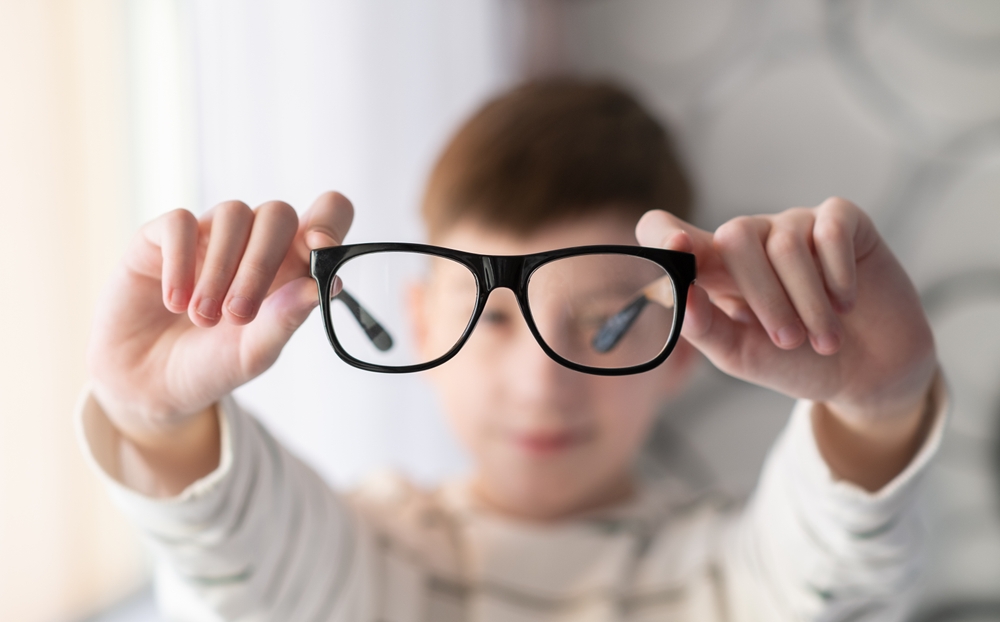
Childhood myopia can have a profound impact on a child's visual wellness and overall development. It can hinder their ability to see clearly in school, participate in sports, and enjoy outdoor activities. If left untreated, myopia can progress rapidly, leading to more severe levels of nearsightedness and increasing the risk of developing sight-threatening conditions later in life.
Symptoms of Myopia in Children
Recognizing the signs and symptoms of myopia in children is crucial for early detection and management. While children may not always able to articulate their vision problems, there are certain indicators that parents can look out for. Some common symptoms of myopia in children include squinting, holding objects or books too close to the face, rubbing the eyes frequently, complaints of headaches or eye strain, and difficulty seeing distant objects clearly.
The Importance of Early Myopia Management
Managing myopia at an early age can help slow down its progression. High myopia can increase the risk of eye conditions such as retinal detachment, glaucoma, and myopic maculopathy. By implementing early intervention strategies, the progression of myopia can be mitigated, reducing the likelihood of developing these sight-threatening conditions later in life.
Spending time outdoors each day is crucial in reducing the risk of myopia in children. Outdoor light is thought to help regulate the growth of the eye and lower the risk of developing myopia. Additionally, outdoor activities encourage children to focus on distant objects, which can help reduce the progression of myopia. Experts recommend that children spend at least 1 to 2 hours outside each day to reap these benefits. Encouraging children to spend time outside each day can significantly contribute to their eye health and potentially lower the risk of developing myopia.
Children with uncorrected or rapidly progressing myopia may experience challenges in the classroom due to difficulties in seeing the board, reading materials, and focusing on near tasks. Early myopia management can help optimize visual acuity and comfort, potentially enhancing academic performance and learning experiences.
Exploring Orthokeratology
Orthokeratology, also known as corneal reshaping therapy (CRT), is a non-surgical method for managing myopia in children. It involves wearing specially designed rigid gas permeable contact lenses overnight, which gently reshape the cornea while the child sleeps. This temporary reshaping effect allows for clear vision during the day without the need for glasses or contact lenses.
Orthokeratology has been shown to effectively slow down the progression of myopia in children. By gently flattening the cornea, it helps to correct the refractive error and reduce the elongation of the eyeball over time.
The Role of Atropine Eye Drops in Managing Myopia
Atropine eye drops have emerged as an effective treatment option for controlling myopia progression in children. Atropine is a medication that works by temporarily relaxing the focusing mechanism of the eye, thus slowing down the elongation of the eyeball and the progression of myopia.
How Soft Dual Focus Contact Lenses Work for Myopia Management
Soft dual focus contact lenses are a convenient and comfortable option for managing myopia in children. These lenses are specially designed with different zones to provide clear vision at various distances. The central zone corrects the child's distance vision, while the peripheral zone works to slow down the progression of myopia.
These contact lenses offer the advantage of being easy to wear and maintain, making them suitable for active children. Soft dual focus contact lenses are a popular choice for myopia management, providing children with both visual comfort and effective control of myopia progression.
Axial Length and Its Importance in Myopia Management
Axial length refers to the distance from the front to the back of the eye, including the cornea and lens. It is a crucial measurement in the field of myopia management as it directly correlates with the progression of myopia.
Axial length is a reliable indicator of myopia progression and can even predict myopia before it occurs. Longer axial lengths are associated with higher degrees of myopia, making it essential for monitoring changes over time. Monitoring axial length allows for the evaluation of the effectiveness of various myopia management interventions, helping to refine treatment plans for better outcomes.
At Factoria Eye Clinic we monitor these measurements with the Zeiss Lenstar Myopia. The Zeiss Lenstar is a multifunctional biometer used for accurate and repeatable measurements of axial length. Additionally, the Zeiss Lenstar features novel software tools specifically designed for myopia management, making it a key instrument for optometrists dedicated to myopia management.
Schedule Your Child’s Eye Exam with Factoria Eye Clinic Today
Managing myopia risk in children is crucial for their long-term visual health and well-being. By understanding what myopia is and its potential impact, parents can be proactive in seeking early intervention for their children. By taking the necessary steps to manage myopia risk, parents can help their children maintain clear vision, excel in their daily activities, and enjoy a lifetime of healthy eyesight.
Schedule a comprehensive eye examination for your child and take the first step towards managing their myopia risk effectively, visit Factoria Eye Clinic at our office in Bellevue, Washington. Please call (425) 641-2020 to book an appointment today.






